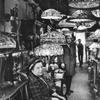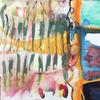Willard Clock Museum to host exhibit of Rare Musical Grandfather Clocks October 6 through November 17, 2013
- NORTH GRAFTON, Massachusetts
- /
- September 30, 2013

The Willard House & Clock Museum will host Keeping Time: Musical Clocks of Early America 1730-1830, an unprecedented exhibit of nearly three-dozen early American musical and chiming clocks. These fully functioning mechanical marvels, all made before 1830, will provide visitors the opportunity to travel back in time and experience the popular music of our ancestors, just as it was played two hundred years ago. To our forefathers, a musical clock playing recognizable songs on a set of finely tuned bells was an awe-inspiring creation. People gathered in homes and public places to dance and sing to the tunes they played. They were so intriguing that people often paid to hear them play.Early tall-case clocks capable of playing music are extremely rare. This exhibit will include one-quarter of the approximately 140 early American examples that are known to survive. At a time when few households contained a clock of any kind, these masterpieces were crafted at an original cost of two to three times that of a standard Grandfather clock. They were only within reach of the most affluent citizens. The cases that house the musical movements represent some of the finest cabinetry produced in Colonial and Federal America. The majority of the clocks in this exhibit are privately owned and most have never before been displayed in public. Some have been silent for decades and for this exhibit have been brought back to life—to play the tunes that so delighted their first owners. The 33 clocks on exhibit were crafted by over 30 different clockmakers from eight states. Work by acclaimed clockmakers such as Simon and Benjamin Willard, Daniel Burnap and Thomas Claggett will be included. Many of the cases were made by important early American cabinetmakers such as Major Stephen Badlam, Matthew Egerton Jr. and members of the Goddard-Townsend School. Creating a musical clock movement was the highest point in a clockmaker’s career. Such expertise was required to produce them and so intricate were their elements, that only a small fraction of clockmakers possessed the necessary skill. Included in the display will be examples of uncased working musical movements that can be studied in the round, so visitors can see exactly how these remarkable clocks function.The names of the tunes played are often inscribed on the clock faces. These tunes were personal choices that often reflected the political or cultural interests of the owner. Collectively, they represent the hit parade of their day.This six-week exhibit promises to be a unique presentation of outstanding 18th- and early 19th-century artistry in clockmaking, cabinetmaking and music. It is an opportunity not to be missed.Guest Curators, Gary R. Sullivan, nationally recognized clock specialist and Kate Van Winkle Keller, internationally known scholar of early American music have assembled this exhibit. Their research will culminate in two forthcoming books on early American musical clocks and the tunes they play. An exhibit catalog will be available.

Willard House and Clock Museum,
11 Willard St. North Grafton, MA. 01536
October 6--November 17, 2013
Hours: Wednesday through Sunday, 10-4.
For more information visit www.willardhouse.org
Contact:
Patrick KeenanWillard House & Clock Museum
508-839-3500
info@willardhouse.org
11 Willard St.
North Grafton, Massachusetts
patrick@willardhouse.org
508-839-3500
http://www.willardhouse.org














